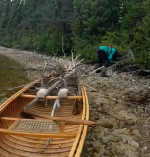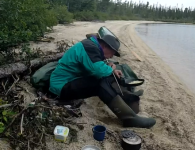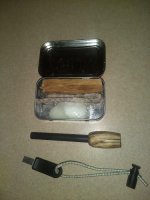So it's been raining or it's otherwise wet and soggy. What techniques do you use to make a fire? What kind of fire starting tinder do you carry or find, and how do you get dry enough kindling, sticks and logs? What fire starter do you prefer -- ferro rod, match, lighter, blowtorch?
In the wet past, I've sometimes just not even tried, but felt guilty later about acting like a bush-league bushcrafter. I'm trying to put together a better fire kit.
In the wet past, I've sometimes just not even tried, but felt guilty later about acting like a bush-league bushcrafter. I'm trying to put together a better fire kit.



